Trier-Saarburg is a district in the west of Rhineland-Palatinate, Germany. Neighboring districts are Bitburg-Prüm, Bernkastel-Wittlich, Birkenfeld, Sankt Wendel (Saarland), and Merzig-Wadern (Saarland). To the west it borders Luxembourg. The district-free city Trier is surrounded by the district.

Ruwer is a Verbandsgemeinde with 18,171 inhabitants on the river Ruwer near Trier in Rhineland-Palatinate, Germany. It is famous for the wine from the Moselle wine-growing region, which used to be called Moselle-Saar-Ruwer, and which was founded by the Romans. The administrative seat used to be located in Ruwer, which was an independent municipality until it was incorporated into the city of Trier. The seat has been located in Waldrach since November 2005.
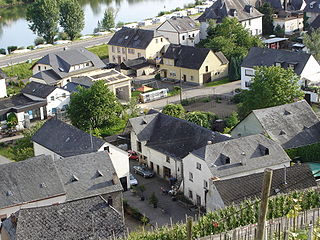
Klüsserath is a commune of the Verbandsgemeinde Schweich in the district Trier-Saarburg in Rhineland-Palatinate in Germany, on the river Moselle between Bernkastel-Kues and Trier.
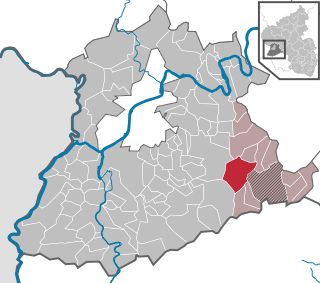
Reinsfeld is a municipality in the Trier-Saarburg district, in Rhineland-Palatinate, Germany. It belongs to the municipality of Hermeskeil. Reinsfeld is a state-recognized health resort.

Sommerau is a municipality in the Trier-Saarburg district, in Rhineland-Palatinate, Germany.

Franzenheim is a municipality in the Trier-Saarburg district, in Rhineland-Palatinate, Germany.

Gusterath is a municipality in the Trier-Saarburg district, in Rhineland-Palatinate, Germany. It belongs to the Verbandsgemeinde Ruwer.
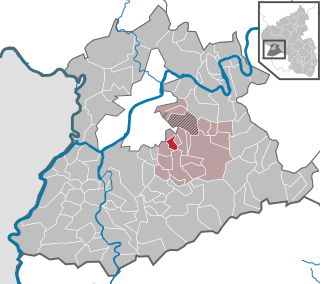
Gutweiler is a municipality in the Trier-Saarburg district, in Rhineland-Palatinate, Germany.

Kordel is a municipality in the Trier-Saarburg district, in Rheinland-Pfalz, Germany.

Lampaden is a municipality in the Trier-Saarburg district, in Rhineland-Palatinate, Germany. The village is over a thousand years old and acquired grazing rights in the year 1036. The area was already populated in Celtic and Roman times.
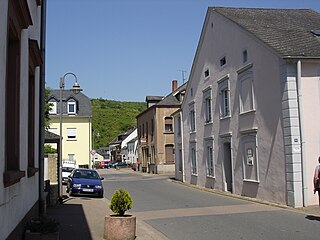
Langsur is a municipality in the Trier-Saarburg district, in Rhineland-Palatinate, Germany.
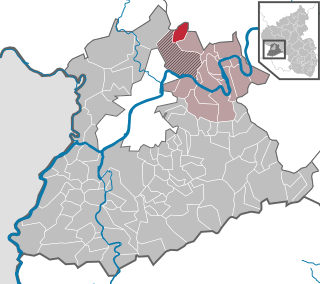
Naurath (Eifel) is a municipality in the Trier-Saarburg district, in Rhineland-Palatinate, Germany.

Oberbillig is a municipality in the Trier-Saarburg district, in Rhineland-Palatinate, Germany.

Welschbillig is a municipality in the Trier-Saarburg district, in Rhineland-Palatinate, Germany.
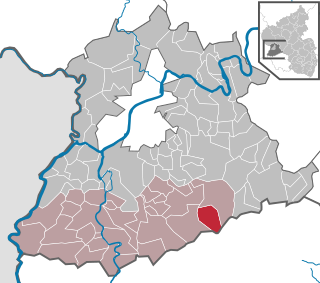
Waldweiler is a municipality in the Trier-Saarburg district, in Rhineland-Palatinate, Germany.

Vierherrenborn is a municipality in the Trier-Saarburg district, in Rhineland-Palatinate, Germany.
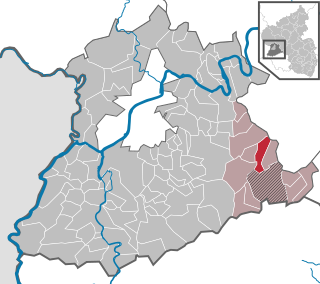
Rascheid is a municipality in the Trier-Saarburg district in Rhineland-Palatinate, Germany. It belongs to the Verbandsgemeinde Hermeskeil and is an officially recognized tourist resort.

Schöndorf is a municipality in the Trier-Saarburg district, in Rhineland-Palatinate, Germany.

Schweich an der Römischen Weinstraße is a Verbandsgemeinde in the Trier-Saarburg district, in Rhineland-Palatinate, Germany.

The Lehbach, in its upper reaches also called Spalbach, is a right-hand tributary of the Ruwer in the county of Trier-Saarburg in the German state of Rhineland-Palatinate. It has a length of 6.602 kilometres (4.102 mi), a catchment area of 12.794 square kilometres (4.940 sq mi). Its GKZ is 26562.
























